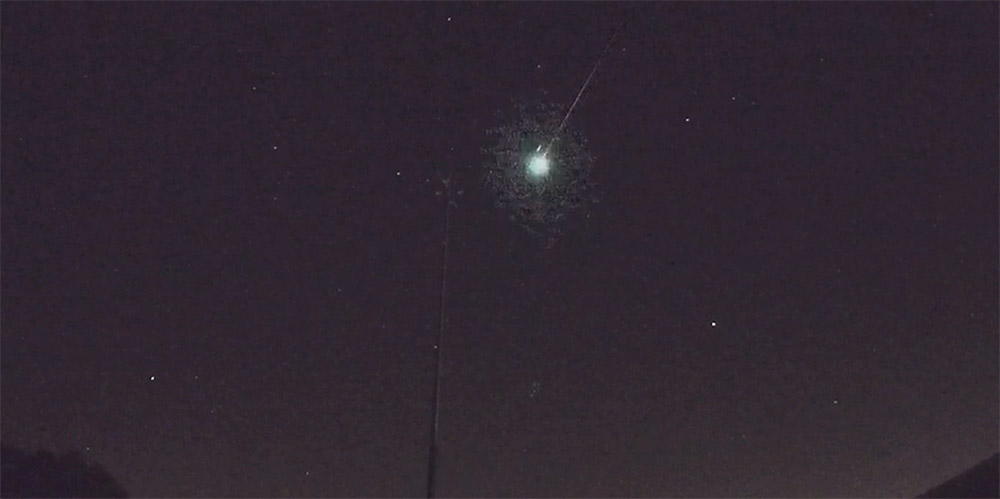The fiery end: On July 31, 2022, a bright fireball erupted in the Spanish capital of Madrid and burned up in the atmosphere. Now astronomers have traced the path of this meteorite to its origin. So the 10-centimeter segment was part of Comet 169P/NEAT, which passed the closest point in its orbit around the Sun on August 11, 2022. More meteors could come from it in the future.
if comets When it reaches the inner solar system, it springs to life: heat and radiation from the ice of our central star, volatile compounds, and creates the typical comet’s tail. But the solar effect can also bigger pieces Blast a comet or even blow it up completely decay to let go. If Earth passed through this debris, it could race through the atmosphere as particularly large and bright meteors.
Fireball over Madrid
This is exactly what was observed at the 31st concert 2022 in the Spanish capital, Madrid. A bright fireball erupted about 100 kilometers above Madrid and shot through the atmosphere to the northeast. The piece, which is probably only about ten centimeters in size, then burned up over Guadalajara province at an altitude of about 77 kilometers – without consequences and completely harmless.
The meteor’s flight was recorded by a number of terrestrial sky cameras, including one from the European Space Agency (ESA) in Sibreros, Spain, and the Southwest European Meteorite Network (SWEMN). This has allowed astronomers to reconstruct the path and origin of the “Madrid meteorite” from the images.

Part of comet 169P / NEAT
Analysis indicated that the fireball was most likely part of comet 169P/NEAT. This very short-period comet orbits the sun in a highly elliptical orbit, taking 1,540 days to complete one orbit. On its path, it crosses the orbits of Venus and the Earth, and therefore it is considered a near-Earth object. However, a comet never gets closer to Earth than 0.14 AU – about one-tenth of the distance between the Sun and Earth.
According to astronomers, Comet 169P/NEAT broke apart about 3,500 to 5,000 years ago, losing about half of its original mass in the process. Most of the broken part collapsed into a cloud of dust and smaller pieces. As this debris cloud follows a path that brushes Earth’s orbit, it creates sparse meteor showers yet – Alpha Capricornids. According to the analyzes, the Madrid meteorite was also part of this shower.
So far, the Earth is only moving through the thin edge region of this meteor shower. But in about 200 years, the cloud of cometary debris could have moved so far that our planet would pass through it at its densest point. Then the Alpha Capricornids could become the brightest and densest meteor of the year.
Source: European Space Agency (ESA)

“Total coffee aficionado. Travel buff. Music ninja. Bacon nerd. Beeraholic.”








More Stories
Coral Seeding: Artificial Insemination Makes Coral More Heat Tolerant
Fear, Anger, and Denial: How People Respond to Climate Change – Research
LKH Graz: Using radiation to combat heart arrhythmias